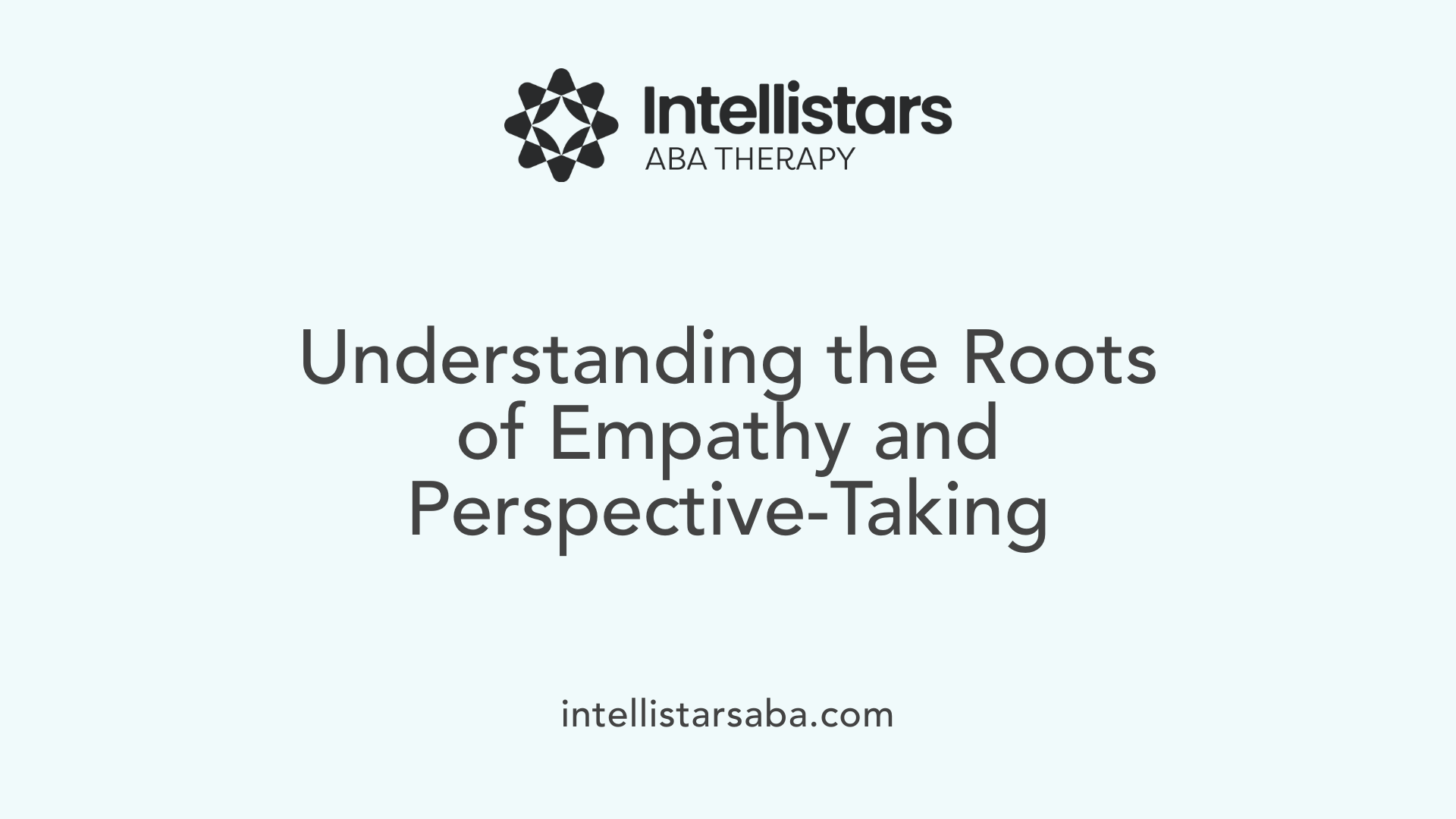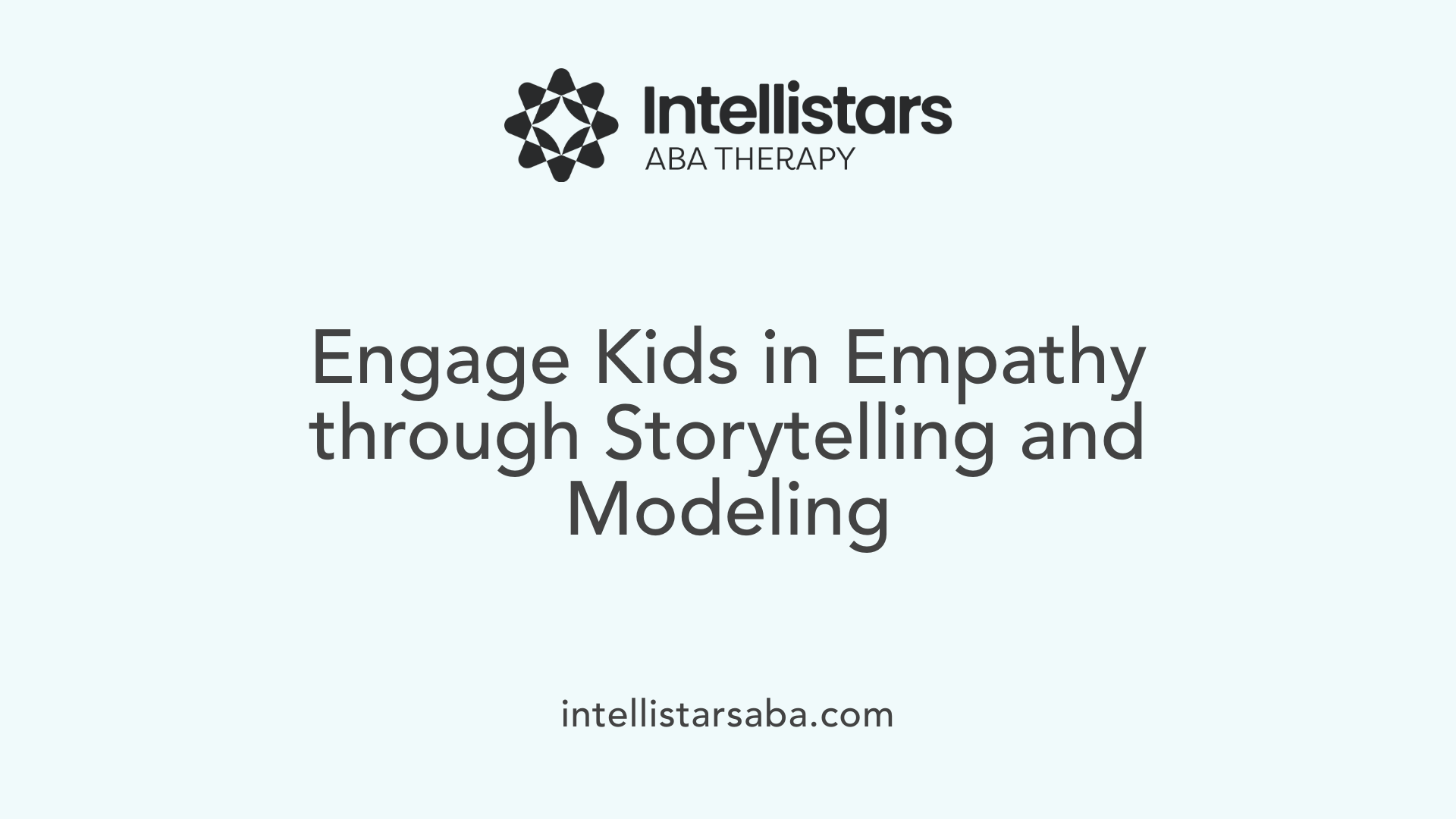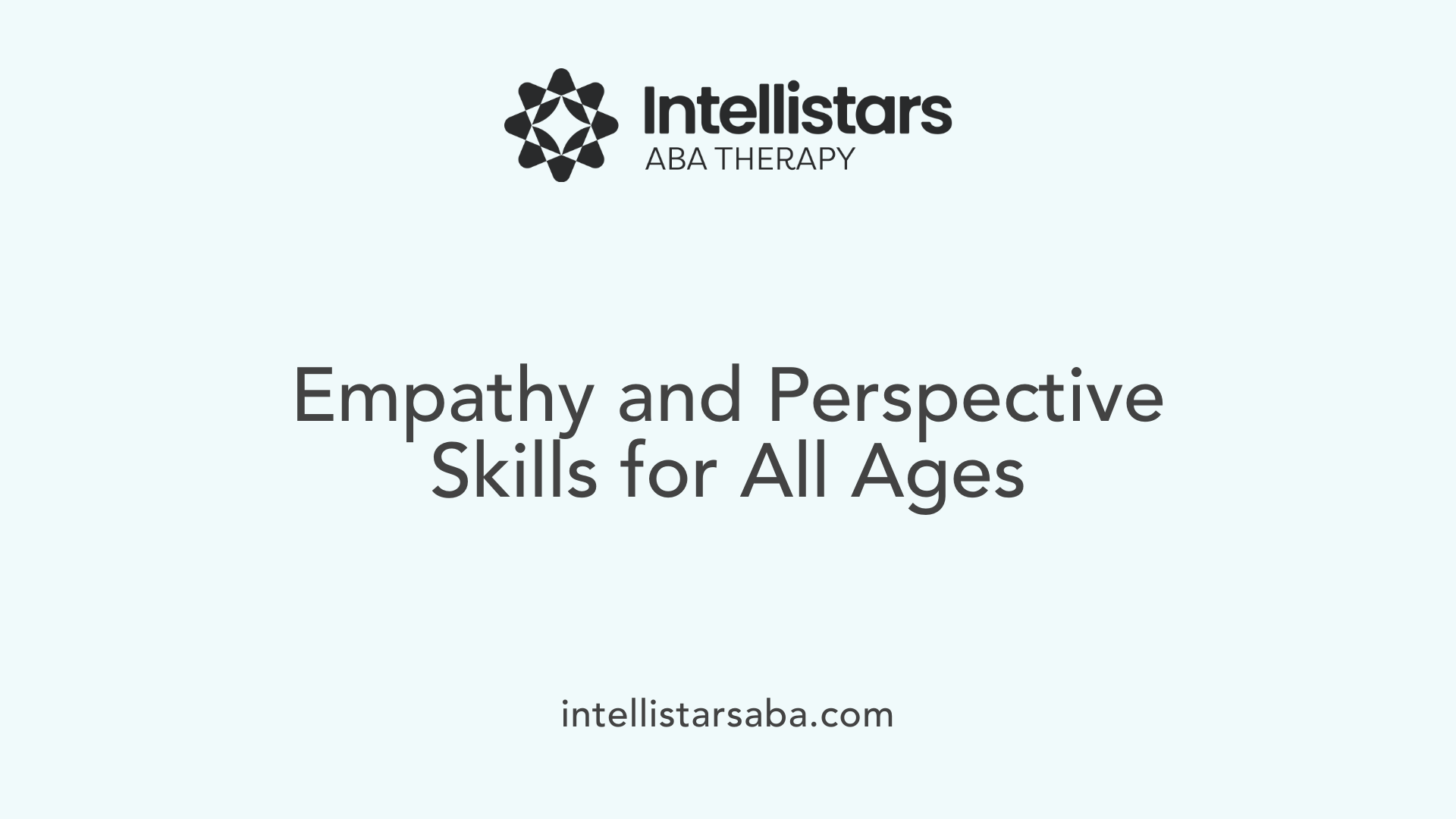Understanding the Foundations of Empathy and Perspective-Taking
Teaching children to understand and care about others' feelings is a vital component of their social-emotional development. From early childhood through adolescence, nurturing perspective-taking and empathy equips children with the skills they need to build strong relationships, resolve conflicts effectively, and foster kindness and understanding. This article explores comprehensive, developmentally appropriate methods for parents and educators to cultivate these essential social skills in children.
Introduction to Perspective-Taking and Empathy Development

What is perspective-taking and empathy?
Perspective-taking, also known as theory of mind, is the ability to understand and attribute thoughts, feelings, wants, and needs to other people. It involves recognizing that others may see, interpret, and feel things differently from oneself. Empathy, on the other hand, encompasses both cognitive empathy—the understanding of another's emotional state—and emotional empathy, which is feeling what others are feeling. Together, these skills allow children to relate to others on a social and emotional level.
Why are these skills important?
Developing perspective-taking and empathy is essential for building strong relationships, effective communication, and conflict resolution skills. When children can see things from others’ viewpoints, they become more compassionate and less judgmental. These abilities foster kindness, help in resolving disagreements, and promote social harmony. Over time, they also contribute to emotional intelligence, resilience, and moral development.
When do children typically develop these skills?
Children usually start to show early signs of empathy and perspective-taking between ages two and three. At this stage, toddlers may attempt to comfort someone crying or show concern. As they grow, their understanding becomes more sophisticated. By age 4 and beyond, children can grasp that others have different thoughts and feelings, enabling more nuanced social interactions. Development continues through childhood and adolescence, with increased understanding and compassion emerging through experiences, storytelling, role-playing, and guided activities.
Additional insights
Research indicates that infants demonstrate basic emotional responsiveness, such as emotional contagion. As children develop, activities like reading stories from different characters’ viewpoints, role-playing, and engaging in social-emotional games deepen their perspective-taking abilities. The gradual growth of these skills underscores the importance of ongoing practice, modeling by adults, and supportive environments that encourage empathy-building.
| Age Range | Developmental Milestone | Supporting Activities |
|---|---|---|
| Birth-2 yrs | Basic emotional responses, affective empathy | Caregiver responsiveness, facial expressions recognition |
| 2-3 yrs | Recognizing different emotions, beginning to comfort others | Role-play, feeling stories, emotion vocabulary |
| 4-6 yrs | Understanding that others have different thoughts and feelings | Reading books, social stories, pretend play |
| 7-12 yrs | Applying perspective in more complex social situations | Group discussions, conflict resolution tasks |
Effective Strategies for Teaching Empathy and Perspective-Taking

How can I teach children about empathy and perspective-taking?
Teaching children to understand and appreciate others' viewpoints is essential for fostering social and emotional development. A variety of engaging activities and approaches can help children grasp these concepts effectively.
One foundational method involves storytelling and literature. Reading books that depict diverse characters and their feelings, such as "Wonder" or "The Diary of a Young Girl," allows children to explore different perspectives in a relatable way. Discussing characters’ motivations and emotions deepens their understanding that people see the world differently based on their experiences.
Modeling empathetic behavior is another vital strategy. Adults can demonstrate compassion by sharing their feelings, listening attentively, and responding thoughtfully to children's emotions. When children see kindness and understanding expressed, they learn to mimic these behaviors themselves.
Encouraging open discussions about feelings helps children recognize and articulate their own emotions and understand others’. Activities like asking children how they think a character feels or what they might do in a given situation build emotional awareness and respect for differing viewpoints.
Role-playing and social scripts make learning active and fun. Children practice stepping into someone else's shoes through scenarios and guided conversations with phrases like "I can see what you mean" or "I understand where you are coming from." Props such as perspective glasses or costumes further enrich these activities, fostering an immersive experience.
In-the-moment coaching techniques can be highly effective. During interactions, guiding children with social scripts and reflective questions supports their immediate understanding of others’ perspectives. For example, prompting them with: "How do you think your friend felt when that happened?" helps solidify perspective-taking skills during real-life situations.
Implementing these strategies consistently and age-appropriately nurtures empathy, helping children develop better social skills, reduce conflicts, and become caring individuals.
Practical Activities and Exercises for Developing Perspective-Taking

What practical activities can help teach perspective-taking and empathy to children?
A variety of engaging and developmentally appropriate activities can enhance children’s ability to see things from others’ viewpoints. Starting with simple recognition, children can be encouraged to observe and discuss different emotions through media, facial expressions, and body language. Reading stories that highlight feelings and different perspectives allows children to understand others’ experiences better.
Role-playing is a powerful method, where children act out scenarios from various viewpoints, facilitating empathy through active participation. Incorporating visual tools like optical illusions, such as letter reversals or ambiguous images, sparks discussions around different perceptions and encourages children to see situations from multiple angles.
Using props like perspective-taking glasses — glasses that distort vision or have specific visual features — can make learning both fun and meaningful. These props help children understand how everyone perceives the world differently and foster curiosity and acceptance.
Storytelling from different characters’ viewpoints is another effective strategy. Books such as 'The Invisible Boy' or 'Wonder' illustrate emotional and social perspectives, prompting discussions on kindness and understanding. For example, holding a paper-shoe test or using real shoes labeled with character names helps children visualize and internalize the experiences of others in literature.
Games and social emotional activities like guessing games, respectful disagreement exercises, or empathy-building card games serve as interactive approaches that reinforce perspective-taking skills. These games promote patience, listening, and respectful dialogue.
Structured programs such as the 'It's Okay to Be Different' series, 'Operation Respect,' or 'Choice to Be Nice' foster ongoing empathy development by incorporating lessons into daily routines. Additionally, digital tools like video games designed to simulate social situations can be especially engaging for teens, encouraging them to consider multiple perspectives in immersive environments.
In total, these activities emphasize that understanding others’ thoughts, feelings, and needs not only improves social interactions but also nurtures kindness, patience, and emotional intelligence in children—fundamental skills for their overall development.
Building Social-Emotional Skills through Structured Activities
 Recognizing emotions is a foundational step in developing social-emotional skills. Children can learn to identify feelings by observing facial expressions, body language, and media portrayals of emotions. For example, showing children pictures, videos, or story characters expressing different emotions helps them interpret and understand these cues.
Recognizing emotions is a foundational step in developing social-emotional skills. Children can learn to identify feelings by observing facial expressions, body language, and media portrayals of emotions. For example, showing children pictures, videos, or story characters expressing different emotions helps them interpret and understand these cues.
Expressing feelings and needs effectively enables children to communicate more clearly. Activities such as role-playing scenarios and storytelling allow children to practice articulating their own emotions and needs. Using feelings charts and journal reflections can also support their emotional vocabulary.
Active listening and communication skills are crucial for fostering understanding. Teaching children to maintain eye contact, listen attentively, and respond thoughtfully promotes meaningful exchanges. Group discussions, 'show & tell' sessions, and social scripts like 'I can see what you mean' help reinforce these skills.
Conflict resolution benefits greatly from understanding others’ viewpoints. Techniques such as the 'Two-Thoughts Game Series' or discussing different perspectives in stories encourage children to consider others' feelings during disagreements. Role-play activities, like imagining different character motives, teach children to approach conflicts with empathy.
Effective strategies for developing social-emotional skills include engaging children in activities like interpreting facial expressions, playing empathy movement games, and discussing stories from multiple viewpoints. Incorporating fun visual aids like perspective glasses or props can make learning engaging. Teachers and parents can also model empathetic behaviors through their own interactions, providing natural opportunities to demonstrate active listening and kindness.
Structured programs such as 'It's Okay to Be Different' or 'Choice to Be Nice' foster understanding and respect among children. Using age-appropriate activities ensures that children develop a strong foundation. As children grow, more complex activities like community service or simulation exercises further enhance their ability to see from others’ perspectives.
In summary, combining storytelling, role-playing, visual aids, and everyday interactions helps children recognize, express, and understand emotions. Consistent practice within a supportive environment promotes empathy, better social interactions, and conflict resolution skills—building blocks for healthy social-emotional development.
Integrating Empathy and Perspective-Taking into Everyday Learning
How can educators and parents effectively integrate teaching empathy and perspective-taking into children's learning?
Embedding empathy and perspective-taking into daily routines is essential for nurturing socially competent children. Educators and parents can do this by creating opportunities for meaningful conversations about feelings, thoughts, and experiences. Regularly discussing emotions during storytime, class activities, and everyday interactions helps children understand and name their own feelings as well as those of others.
Using open-ended questions like "How do you think she felt?" or "What might he be thinking right now?" encourages children to consider different points of view. Role-playing scenarios, where children act out different characters or situations, make perspective-taking engaging and memorable. Incorporating games that involve expressing and recognizing emotions, such as empathy-based board games, enhances skill development.
Inclusion of diverse stories and media examples—such as books, videos, or pictures—allows children to explore different cultural contexts and personal experiences. Teachers and parents should model empathetic responses, such as active listening and validating feelings, to demonstrate these behaviors in action.
Creating a classroom environment grounded in safety and respect promotes openness. When children feel heard and accepted, they are more willing to practice perspective-taking and empathy. Encouraging gentle discussion during conflicts, and guiding children to see situations from others’ viewpoints, nurtures understanding and emotional growth.
Explicit instruction on recognizing nonverbal cues, like facial expressions and body language, helps children interpret emotions accurately. Validation of individual feelings and patience during learning situations foster a supportive atmosphere.
Repetition and reflection across different contexts solidify these skills. Whether through storytelling, paired activities, or community projects, consistent opportunities to practice empathy prepare children for meaningful social interactions. Overall, integrating empathy and perspective-taking into everyday learning blends intentional teaching with daily modeling, creating a foundation for emotionally intelligent individuals.
Resources and Materials to Enhance Teaching of Social-Emotional Skills
Teaching social-emotional skills such as perspective-taking benefits greatly from a diverse range of resources and materials. Children's books are particularly effective, especially those that showcase different viewpoints or explore cultural differences. Titles like 'The Invisible Boy,' 'Wonder,' and 'Should I Share My Ice Cream?' help children see things from others' perspectives through engaging stories.
Social stories and visual aids are also valuable tools. Using pictures, optical illusions, or storyboards, teachers can highlight how individuals might see or feel differently in similar situations. Visual triggers like emotion charts or body language diagrams aid children in recognizing and understanding emotions.
Role-playing activities and scenario cards foster experiential learning. Providing children with cards or scripts that outline social situations encourages them to practice empathy and problem-solving. These activities are especially useful for practicing respectful disagreements or understanding others' feelings.
Comprehensive curricula and guides designed for social-emotional learning (SEL) help educators systematically introduce and reinforce these skills. Structured lesson plans, activity bundles, and detailed guides support teachers in creating meaningful lessons focused on empathy, communication, and conflict resolution.
Therapeutic tools, including social skills assessment forms, goal-setting templates, and activity plans, support targeted instruction and progress monitoring. These tools are useful for identifying specific areas where children need support and measuring growth over time.
Beyond structured materials, real-life engagement plays a crucial role. Discussions about current events, community service activities, and modeling empathetic behavior at home further embed perspective-taking and empathy in everyday life.
A well-rounded approach combining books, visual aids, role-play, curricula, and real-world activities provides the foundation for nurturing socially aware and emotionally intelligent children.
Extending Empathy and Perspective-Taking Beyond Childhood
 Teaching empathy and understanding different perspectives is vital at all stages of life, including adolescence and adulthood. Effective methods involve experiential activities like role-playing, storytelling, and active listening exercises. These activities help individuals imagine and understand the emotional experiences and viewpoints of others.
Teaching empathy and understanding different perspectives is vital at all stages of life, including adolescence and adulthood. Effective methods involve experiential activities like role-playing, storytelling, and active listening exercises. These activities help individuals imagine and understand the emotional experiences and viewpoints of others.
Modeling empathetic behavior consistently in everyday interactions is also essential. When adults validate feelings, show kindness, and demonstrate patience, they create environments where empathy can flourish. Reflective practices such as participating in compassion circles, engaging in loving-kindness meditation, or volunteering in community service projects broaden individuals' concern for others beyond their immediate circle.
Tailoring approaches to suit different developmental stages improves engagement. For teenagers, discussions around social justice, cultural awareness, and peer relationships can be powerful. For adults, community involvement and workplace diversity initiatives deepen understanding.
Encouraging open questions like
Cultivating Compassion: A Continuous Journey
Teaching children to take others’ perspectives and develop empathy is an ongoing process that benefits from consistent practice, modeling, and engaging activities. By incorporating storytelling, role-play, discussions, and real-life experiences, parents and educators can create enriching environments that foster kindness, understanding, and social competence. Remember, cultivating these skills not only supports children’s immediate social interactions but also lays a foundation for their lifelong relationships and moral development. With patience and dedication, nurturing empathy in children will contribute to a more compassionate and understanding society.
References
- Perspective Taking: The Social Skill You Want to be Teaching Kids
- 7 Ways to Teach Perspective Taking and Stretch Students' Empathy ...
- Teaching Empathy and Kindness to… - Brighter Futures Indiana
- Using Books to Teach Perspective Taking Skills to Children
- Activities for Teaching Kids Perspective-Taking Skills - Mightier
- Teaching Empathy and Perspective-Taking to Pre-K and K Students
- Teaching Kids Empathy: How to Help Your Child Understand Others
- Building Empathy Through Perspective Taking
- [PDF] GOT EMPATHY? PLANTING THE SEEDS OF PERSPECTIVE-TAKING






